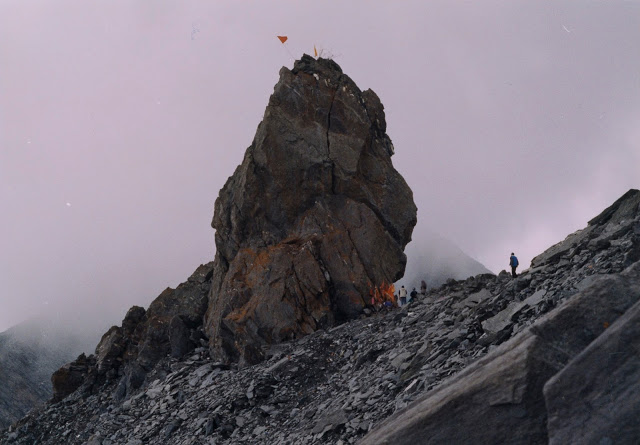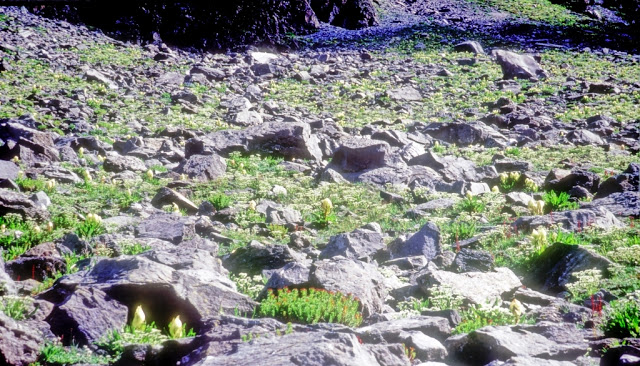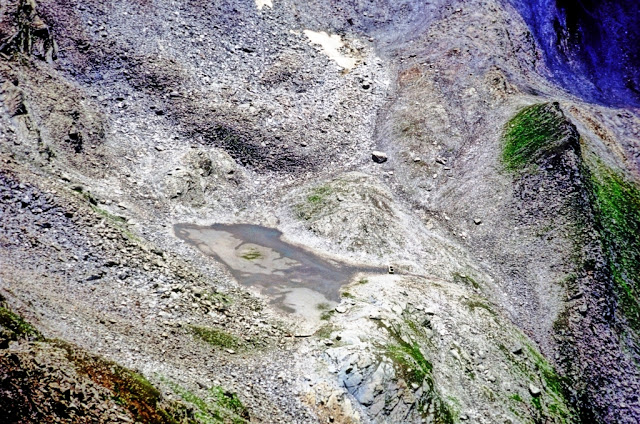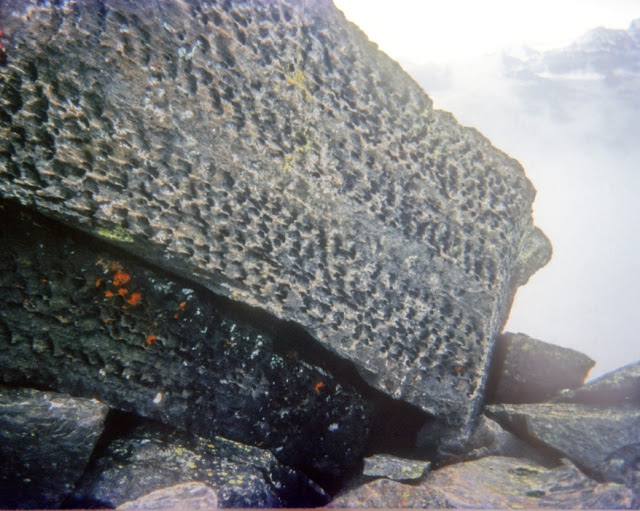
At 18000 feet, the peak at Srikhand Mahadev is imposing in its savage grandeur and timeless beauty, shrouded in constantly drifting clouds, surrounded by ice fields and buffeted by powerful winds all day long. The massif is located on the border of Kullu and Shimla districts and is approachable from three directions: Bathad in the Tirthan valley, Phancha in the Ghanvi Khad and Baghipul. It is perhaps one of the most difficult pilgrimages in the state but for those who venture to undertake to visit this abode of Shiva, the rewards are plenty. And one of them is the rich mythology associated with this legend, rich even by the fecund standards of our Dev Bhoomi. I find three of them particularly fascinating and poignant.
On the final day of the trek to the peak one has to ascend from Bhim Dwar, the camp site for the previous night. The first five kms or so is over alpine pastures, but then the terrain becomes rocky and covered with scree – not a blade of grass grows in this barren wasteland. But after another four kms or so one suddenly finds one self in the middle of a field of flowers – a profuse expanse of the mystical Brahm Kamals, hundreds of them sprouting in glee from between the rocks, their white and cream colours transforming the barren landscape into an arboretum of the gods. This place is known as Parvati Ka Bageecha (The Garden of Parvati).

The Brahm Kamal is the favourite flower of the goddess Parvati, and they are there for a reason. Legend has it that it was at this spot that Parvati waited for 18000 years to win the affection of the God Shiva, who was meditating on the peak at Srikhand, totally oblivious of her. Empathising with her loneliness and distress, the Brahm Kamals bloomed around her spontaneously to give her company and cheer her up. And they are certainly a cheering sight in this desolate terrain, giving one fresh encouragement for the remaining climb of 2000 feet that still remains.
One continues ascending beyond Parvati Ka Bageecha and the terrain soon reverts to the harsh, glaciated landscape, all greenery vanished. A short distance on, at the foot of the final, steep climb to the peak is a small, glacial lake, fed by the snow melt from the surrounding glaciers – and herein is embedded another poignant myth. This pristine lake is in the shape of an eye and is known as Nain Sarovar. Legend has it that Parvati, while waiting for Shivji, became so disheartened and disconsolate that she started weeping. One tear drop fell on the ground and formed itself into the shape of a lake which is what we see today, hence its name. Pilgrims and trekkers take a dip in these holy waters before proceeding further. The lake is gradually filling up with detritus and may one day disappear entirely, but it has imbued this stark landscape with an anthropomorphic emotion which adds richness to this dev bhoomi.

From the lake it is a steep 2000 feet ascent to the peak over continuous rockfall, boulders and patches of ice and snow, but one baffling mysterious myth still remains. Halfway to the peak, scattered among the boulders, one comes across a dozen or so stone tablets of massive proportions, rectangular in shape, completely out of place among these rounded boulders. There are carvings on their faces, like some type of cuneiform or vanished script in regular lines. Take a look at the image below:

It would be difficult to convince any reasonable person that (a) the regular shapes of these tablets have not been CARVED by a humanoid hand or that they are the result of natural erosion, and (b) that the calligraphic type markings on them are the result of action of winds and ice. Such explanations do not match with the surrounding rocks which do not show the effects of these natural forces. The carvings are too stylised and uniform to be natural . And the question: why only these dozen odd tablets ? The devout have a more interesting explanation: these mountain ranges were visited by the Pandavas during their exile (there are legends of the fabled Pandavas in other regions of the state, and other natural features associated with them, such as Pandupul in the Parbati valley and Bhim ka Chulha at Hatu Peak), and they are supposed to have spent some time on Srikhand Mahadev. These tablets were carved by Bhim and the ‘writings’ on them are the accounts of their travels recorded by him. They are known as ‘Bhim Ki Bahi’ or Ledgers of Bhim. Pilgrims venerate these rocks, as the chandan ( sandalwood) markings on the image bear testimony.
I am reluctant to dismiss outright something which I cannot explain rationally. The remote, natural landscapes of Himachal are absolutely saturated with similar mythologies of the ages. We may not believe in them but we must respect them for they are part of the DNA of both man and nature in these forbidding regions. They bring together MAN, RELIGION and NATURE, a much more sustainable synthesis than today’s concoction of Man , Religion and Politics. They have also played a significant role in preserving the natural environment and we must value them for this reason alone, if not for others.
| The author retired from the IAS in December 2010. A keen environmentalist and trekker he has published a book on high altitude trekking in the Himachal Himalayas: THE TRAILS LESS TRAVELLED.
His second book- SPECTRE OF CHOOR DHAR is a collection of short stories based in Himachal and was published in July 2019. His third book was released in August 2020: POLYTICKS, DEMOCKRAZY AND MUMBO JUMBO is a compilation of satirical and humorous articles on the state of our nation. His fourth book was published on 6th July 2021. Titled INDIA: THE WASTED YEARS , the book is a chronicle of missed opportunities in the last nine years. Shukla’s fifth book – THE DEPUTY COMMISSIONER’S DOG AND OTHER COLLEAGUES- was released on 12th September 2023. It portrays the lighter side of life in the IAS and in Himachal. He writes for various publications and websites on the environment, governance and social issues. He divides his time between Delhi and his cottage in a small village above Shimla. He blogs at http://avayshukla.blogspot.in/ |




Which human first located the shrine (Shrikhand Mahadev Ji)? Who was the first person to visit/discover? When did the yatra start?